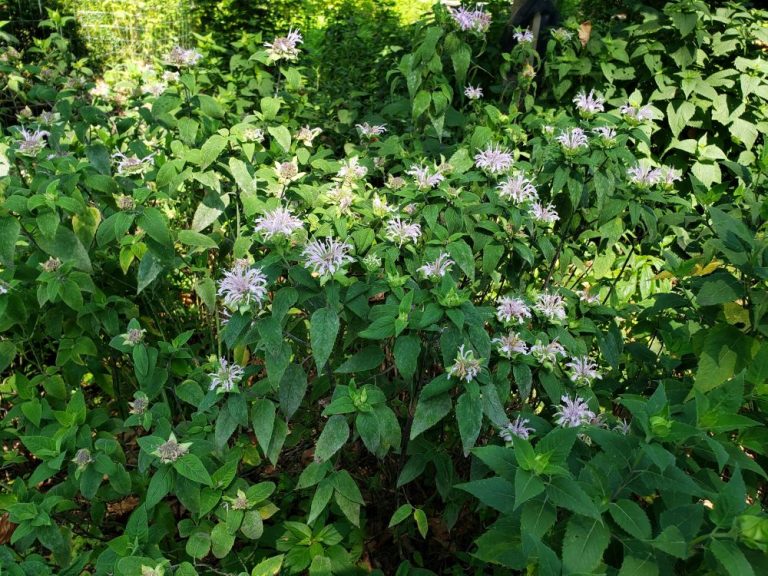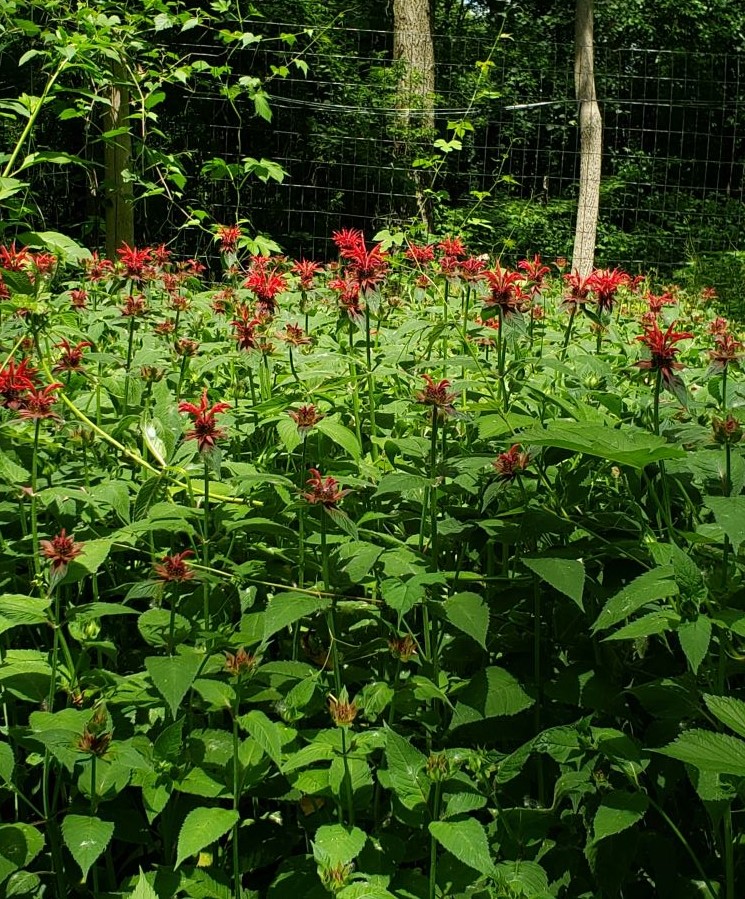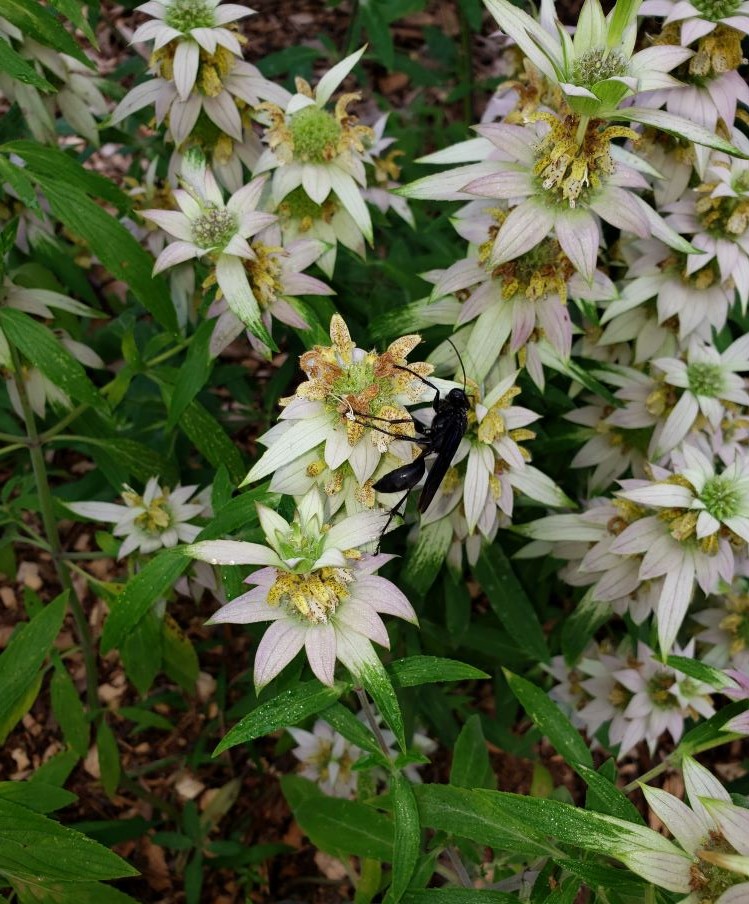The many common names of monardas make it easy to see why using a plant’s botanical name is important. Bee balm, Oswego tea, horsemint, and bergamot are some of the names these northeast native plants go by. Their interesting flowers resemble a spiky hairdo that rarely has a bad hair day! These tubular flowers are loved by bees and other pollinators, including hummingbirds. Members of the mint family, monardas reveal this connection when you break a leaf to reveal their fresh scent. Monardas are edible and have traditionally been used by native Americans for medicinal purposes. They are still used by some today for cold and flu symptoms.
The US has 15 species of monardas, but only three are commonly available to gardeners. Beginning with the tallest of the three, wild bergamot, Monarda fistulosa, can grow to 4 feet tall and is the most deer tolerant of the three. It is drought tolerant but can grow in moist soils and is often grown in meadows. It sports lavender flowers that will constantly hum with several species of native bees and its leaves have a scent similar to oregano.

Monarda fistulosa

Monarda didyma
Scarlet bee balm, also called Oswego tea, Monarda didyma may be the most familiar one due to its bright red color. In addition to bees and butterflies, it is particularly attractive to hummingbirds. John Bartram, the famous Philadelphia botanist, was a member of a peace mission that met with the Iroquois people in upstate New York during the 1700s. He noticed settlers near Fort Oswego brewing a tea made from the leaves of Monarda didyma, hence the name Oswego tea. Bartram sent many plants, including monardas, from Philadelphia to Europe and his garden is the longest surviving botanical garden in North America.
Spotted bee balm or horsemint, Monarda punctata usually grows from 12 to 24 inches tall. It has very unusual flowers that need to be examined closely to appreciate. The flowers are tubular as in the previously discussed monardas, but they are stacked as in a tower and appear to be topped by a mini pineapple! Take a close look at the patterns, colors and spotting found on its flowers and you will discover that, the longer you look, the more intriguing they become. Long blooming, this year one of my plants fortunately bloomed into November and helped feed many bees starving for nectar during the unusually late 70-degree days.

Monarda punctata
Each of these monardas performs best in full sun. Monarda didyma and Monarda fistulosa can spread somewhat aggressively if your garden has optimal conditions. Monardas do have one drawback – – their leaves tend to suffer from powdery mildew, a common fungal disease that gives the leaves an unattractive coat of white or silver that can cause them to drop. One remedy for this is to avoid crowding and thus increasing air circulation, or to cut them back after they bloom so they can return with healthier foliage. One can also find recipes online for making sprays using baking soda. I leave them alone and let nature take its course. Don’t let this minor drawback keep monardas out of your garden as the benefits they provide to pollinators are more than worth it! For help in selecting more resistant varieties, Mt. Cuba Center in Delaware conducted a multi-year trial of many monardas and published a report showing which ones were less susceptible to powdery mildew. Click Mt. Cuba Center report for more information.
Add monardas to your full-sun garden and enjoy the many insects you benefit while sipping a cup of monarda tea!
